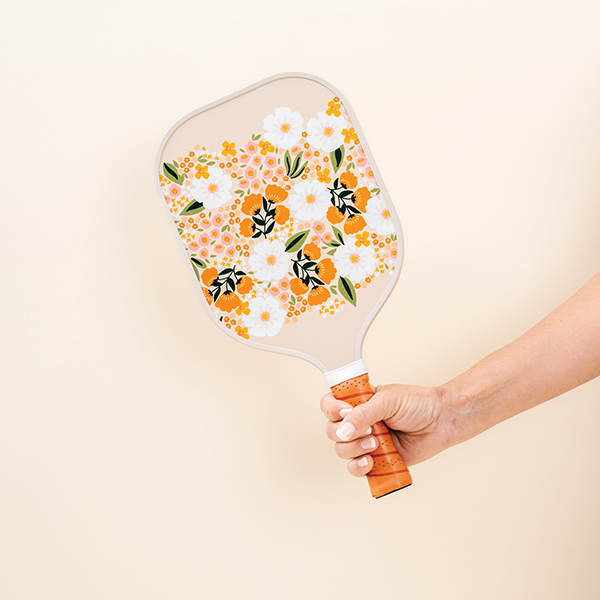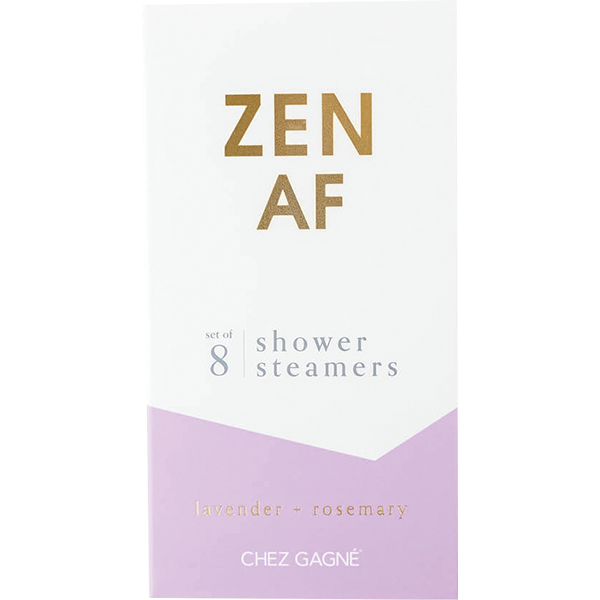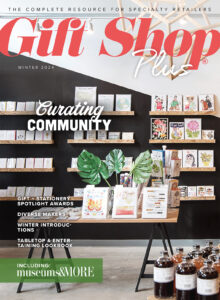From Good to Great
Know your identity and take your gift shop to the next level
By Anne Obarski, Special to Museums & More
I love to shop, and I know I’m not alone. Like me, I also know that many people love to take out-of-town visitors to my special “haunts” when they come to visit.
I recently started listening to myself and how I describe each location that on my list of “must-sees.” Every word is well chosen and creates a sense of anticipation prior to our visit.
Think about your favorite gift shops and restaurants and how you would describe them to me if I was to visit. Now describe your gift shop in three words. Then add one sentence after those three words that starts with, “You just have to see our …”
I trust that the reason that they are drawn in represents the core of your branding process. If you haven’t looked at your brand this way before, this is a unique way to re-address how you want to be seen in the market place and how you want your customers to advertise your gift shop.
I was reading an online business article recently that did this exercise by listing the author’s favorite gift shops in Seattle. Notice that even the store names create a sense of curiosity.
Burnt Sugar & Frankie: Funky, girlie and irresistible, this combination gift shop and shoe boutique has it all for girls who love to shop.
Horseshoe: The adorable décor of this boutique is part and parcel of the shopping experience here. Hardwood floors, saloon door dressing rooms, vintage sewing machines, rustic farm equipment and horseshoes (naturally) are incorporated into the design.
Hitchcock: Tucked away in Madrona, this clever little jewelry shop has some of the most fashion-forward adornments in town. The chameleon-like boutique changes its interior every shopping season, adding to its allure.
Each store is narrowly niched. As buyers, these owners have learned that if it does not fit the brand of the shop, it is not worth the investment. Do what you do best, and make sure your customers know what your best is.
Stocking Up
Once you have decided who you are as a retail entity and what you want your customer to be able to say about you in three words, the rest of building your gift shop business becomes easier.
Your inventory helps set you apart from being just a nice gift shop to being a great gift shop. How focused are you when it comes to inventory control? How many classifications do you buy for and what percentage does each one produce in comparision to the total? What percentage of your square footage is devoted to each classification and do you know your dollars per square foot for each classification? It is critical that you understand the numbers that coordinate with the “great merchandise” you have spent time and money choosing for your customer.
When I was teaching retailing classes, I described four ways to look at your merchandise or items you were considering buying and how they fit within each classification.
1. Fashion Items
People want gift items that are different, unusual and can’t be found around the corner. The advantage of carrying this type of merchandise is that price comparison is difficult. Whether the item is handmade or just a new name within your store, you now have the ability to set your own price, build a larger margin and feel comfortable with it.
2. Basic Items
Basic items are what I call your “bread and butter” of inventory. These products are those things you sell day after day and whose sales help pay the bills. It could be clothing, mugs, gift bags, tissue paper, cards, the list goes on. Customers expect those basic items to be reasonably priced, always neatly in stock and easily accessible.
3. Sale Items
Everyone expects to find sale items in every store, somewhere. There are two ways to fulfill this need in the customer’s mind. Either make a specific “purchase” of items that normally sell well at full price and run a special sale on them and second, keep a close watch on your inventory so that older merchandise is reduced and put on sale on a regular basis to maintain a healthy total store turnover.
4. Building Margin
The larger your margin, the better the chance for bottom-line profit. To maintain a profitable business, it is critical to focus on each part of the process that affects the bottom line and what to do when the margin is looking thin.
Do the Math
Let’s look at an elementary profit and loss example.
Cost: This is the price you pay for an item from a vendor. The question most buyers have in the back of their mind is, “Can I do better?” But the question may not be how cheap you can get the item at, but moreover, what is the final price a customer is willing to pay.
Retail: This is the price you idealistically want to sell your item at. A buyer’s job is to evaluate every item and analyze how much of a markup or margin you are willing to place on the item. Could you purchase something at $5 and price it at $100? The answer is yes, you could. The question is really, would it sell for $100? How well do you know your customer and their buying habits? Do your clients or customers pay “sticker price” or do they expect a deal?
Margin: If I buy an item at $10 and sell it for $100, I will make $90. If I sell 1,000 of them, I’ll be rich! Margin is not money in your pocket, but rather the starting point that you must subtract all of your expenses from. Margins can – and should – vary within classifications and departments within the business. The more margin that can be created, the less stress you will feel when there are unexpected expenses. I would assume that the Seattle gift shops have a nice margin on the majority of the items they carry, and because their inventory is unique and desirable, the turnover is quick and few pieces need to be reduced to sell.
Becoming a great gift shop is more than just stocking great merchandise and having a critical eye when it comes to store operations. It is about creating a customer experience so pleasant that your customers want to spread the word about you. I call that being a “contagious business.”
So if you asked your best customers what three words they would use to describe your gift shop to their friends, what would they be? What is the “lasso sentence” they use to entice their friends to shop at your store? If you can answer these two questions, you are on your way to becoming a great gift shop that is top of the “must-see” list in your community.
Anne Obarski is the executive director of Merchandise Concepts, professional speaker and author. For more information, visit www.merchandiseconcepts.com or e-mail her at anne@merchandiseconcepts.com.






















